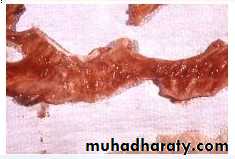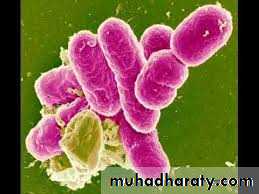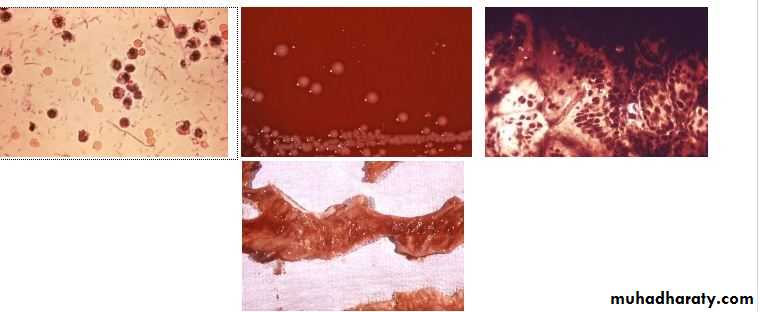Shigellosis
Dr Mustafa Nema /Baghdad college of Medicine 2014
Shigellosis InfectionEtiology
Shigellae are small, gram-negative, nonmotile bacilli that are very closely related to E. coli.
Shigellosis is associated with a high rate of secondary household transmission.
How do people catch Shigella?
The Shigella bacteria pass from one infected person to the next.Shigella are present in the diarrheal stools of infected persons while they are sick and for up to a week or two afterwards
Shigella infections may be acquired from eating contaminated food.
Contaminated food usually looks and smells normal.
Flies can breed in infected feces and then contaminate food.
Water may become contaminated with Shigella bacteria if sewage runs into it, or if someone with shigellosis swims in or plays with Shigella infections can then be acquired by drinking, swimming in, or playing with the contaminated wate
Shigellae survive the low pH of the gastric acid barrier, and as few as 10–100 organisms can cause infection.
The four most common Shigella serotypes are:
S. dysenteriae type 1S. flexneri
S. boydii
S. sonnei
Clinical Manifestations
Patients may remain asymptomatic after infection orDevelop fever, abdominal pain and diarrhea, or
Experience a progression to bloody diarrhea and dysentery.
Dysentery is characterized by the passage of 10–30 stools per day in small volumes containing blood, mucus, and pus, with associated severe abdominal cramping and tenesmus.
Shigella causes extensive ulceration of the epithelial surface of the colonic mucosa.
Diagnosed by stool culture
long term consequences to a Shigella infection?
Persons with diarrhea usually recover completely, although it may be several months before their bowel habits are entirely normal.About 2% of persons who are infected with one type of Shigella, Shigella flexneri, later develop pains in their joints, irritation of the eyes, and painful urination.
This is called post-infectious arthritis.
It can last for months or years, and can lead to chronic arthritis.
Post-infectious arthritis is caused by a reaction to Shigella infection that happens only in people who are genetically predisposed to it.HLA-B27.
Severe cases may progress to toxic dilatation of the colon, colonic perforation, and death.
Shiga toxin may cause hemolytic-uremic syndrome (HUS) The syndrome is characterized by oliguria, a marked drop in hematocrit, renal failure, and a mortality rate of 5–10%.
Treatment
• Rehydration and supportive measures.
Use of antimotility agents is contraindicated in the dysenteric phase of disease.
2. Antibiotics are given only in severe cases, in which they can decrease illness duration and shorten the carrier state.
Fluoroquinolones are effective (e.g., ciprofloxacin, 500 mg bid for 3 days).
TMP-SMX (160/800 mg bid for 3–5 days) can be used,Ampicillin (but not amoxicillin).
Azithromycin (1 g in a single dose) is effective in adults.
Preventing the spread of shigellosis
Wash hands with soap carefully and frequently, especially after going to the bathroom, after changing diapers, and before preparing foods or beverages.Do not prepare food for others while ill with diarrhea





